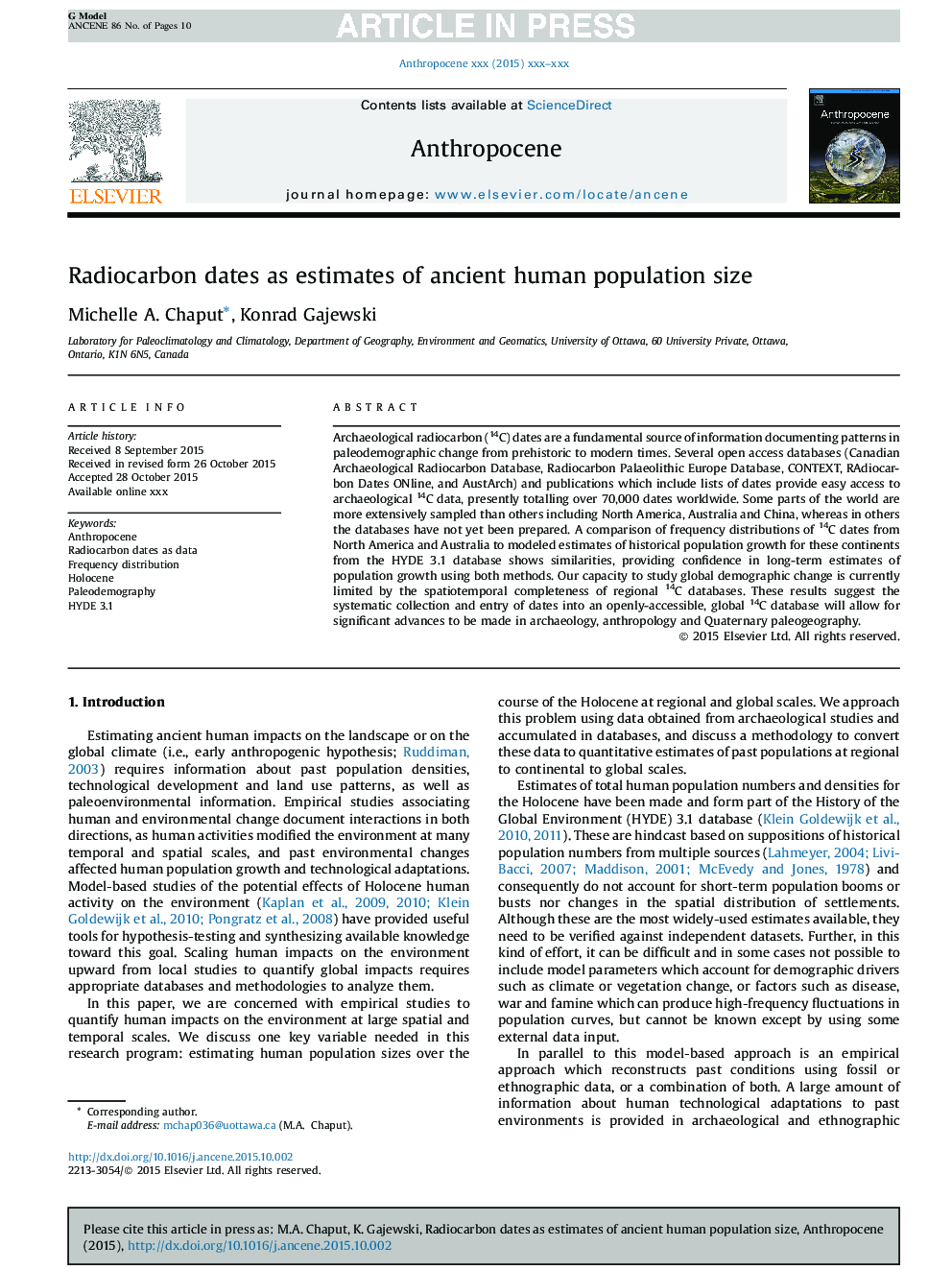| Article ID | Journal | Published Year | Pages | File Type |
|---|---|---|---|---|
| 5755068 | Anthropocene | 2016 | 10 Pages |
Abstract
Archaeological radiocarbon (14C) dates are a fundamental source of information documenting patterns in paleodemographic change from prehistoric to modern times. Several open access databases (Canadian Archaeological Radiocarbon Database, Radiocarbon Palaeolithic Europe Database, CONTEXT, RAdiocarbon Dates ONline, and AustArch) and publications which include lists of dates provide easy access to archaeological 14C data, presently totalling over 70,000 dates worldwide. Some parts of the world are more extensively sampled than others including North America, Australia and China, whereas in others the databases have not yet been prepared. A comparison of frequency distributions of 14C dates from North America and Australia to modeled estimates of historical population growth for these continents from the HYDE 3.1 database shows similarities, providing confidence in long-term estimates of population growth using both methods. Our capacity to study global demographic change is currently limited by the spatiotemporal completeness of regional 14C databases. These results suggest the systematic collection and entry of dates into an openly-accessible, global 14C database will allow for significant advances to be made in archaeology, anthropology and Quaternary paleogeography.
Related Topics
Physical Sciences and Engineering
Earth and Planetary Sciences
Atmospheric Science
Authors
Michelle A. Chaput, Konrad Gajewski,
